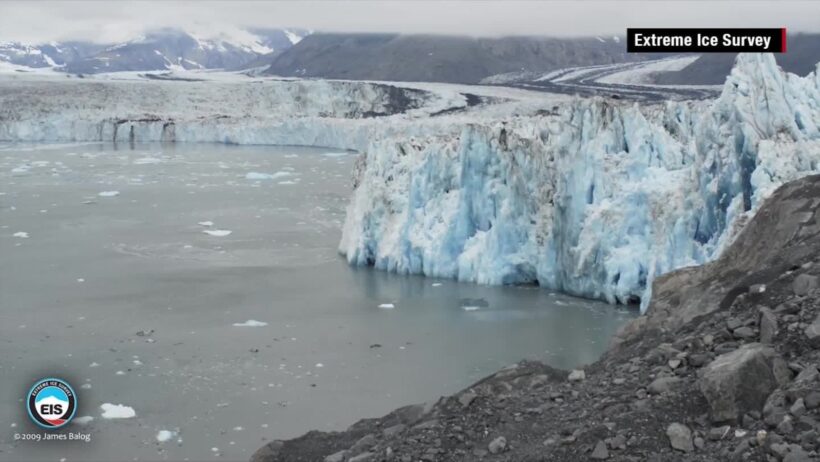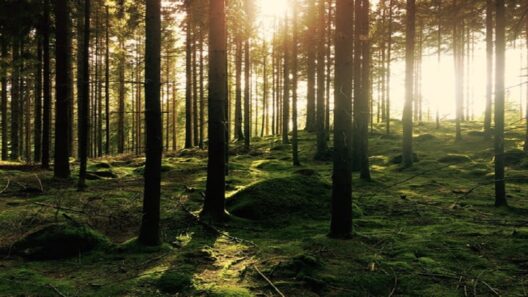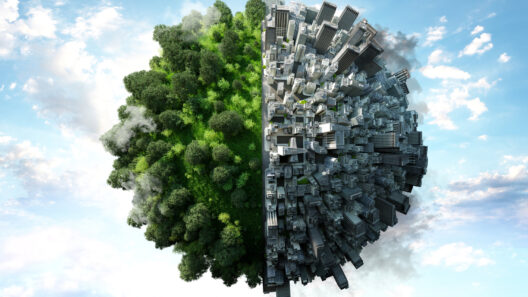The symbiotic relationship between humanity and the natural environment has never been more evident than in the poignant tale of glaciers and ice caps. These majestic formations, steeped in ancient history, are not merely picturesque elements of our planet; they are vital indicators of climate stability. As global temperatures soar, glacial ice is succumbing to unprecedented rates of melting, yielding a harrowing reality: the consequential rise in sea levels is more than just a troubling statistic; it represents a palpable threat to coastal communities worldwide.
To understand the full implications of melting glaciers and ice caps, it is essential to delve into the mechanics of ice formation and the intricate dynamics of climate change. Glaciers, formed over millennia, are essentially rivers of ice, fed by snowfall that compresses over time. The cyclical process of accumulation and ablation—where snow builds over the winter and melts during the warmer months—maintains the delicate balance that sustains these colossal ice masses.
Global warming disrupts this equilibrium. The Intergovernmental Panel on Climate Change (IPCC) reports that global temperatures have increased drastically since the late 19th century. This warming is not uniform; its effects are unevenly distributed, with the polar and mountainous regions witnessing some of the most drastic increases. In areas where average temperatures exceed the freezing point of water, glaciers cannot maintain their mass. Consequently, they shrink and retreat, spilling glacial meltwater into the sea at alarming rates.
The consequences of this glacial retreat are profound. As glaciers recede, they contribute to rising sea levels—the very phenomenon that jeopardizes millions living in low-lying areas. Projections estimate that if current trends persist, sea levels could rise by several feet over the next century. Such an event would render coastal cities like Miami, New Orleans, and countless others increasingly vulnerable to flooding. Imagining these vibrant urban landscapes submerged under water is a stark reminder that climate change is not a distant concern; it is a present reality.
Yet, the story of melting glaciers transgresses mere statistics and projections of doomsday scenarios. It embodies a fundamental shift in perspective. Glaciers are not passive observers of climate change; they are active participants in the Earth’s hydrological cycle. The meltwater they release is critical for freshwater resources, agriculture, and ecosystem health. In many regions, such as the Himalayan mountain range, glaciers serve as essential water sources for billions of people. The loss of these glaciers therefore heralds dire consequences, not only for biodiversity but also for water security.
The implications of melting glaciers extend beyond human communities and our immediate environments. As ice caps disintegrate, they release previously trapped greenhouse gases—primarily methane and carbon dioxide—into the atmosphere. These gases further exacerbate global warming, creating a vicious cycle that seems almost insurmountable. The irony is palpable: as we scramble to mitigate the impacts of climate change, the very solutions we employ can inadvertently accelerate the problem.
In addition, the aesthetic and cultural significance of glaciers must not be overlooked. For centuries, these ice giants have inspired art, culture, and folklore across the globe. They serve as natural monuments, offering a glimpse into the Earth’s geological past. The loss of glaciers translates into a loss of heritage, a severing of the poignant ties that bind communities to their landscapes. This cultural erasure poses existential questions about identity, continuity, and the meaning of heritage in an age of rapid change.
To confront the challenges posed by melting glaciers, it is imperative to harness curiosity and innovation. Scientists are employing cutting-edge technologies and methodologies to monitor ice mass loss, utilizing satellite imagery and automated ground stations to gather data. This information feeds into predictive models, enabling us to better understand how glaciers interact with climate variables and project future scenarios. Increased investment in research and development not only amplifies our understanding but also fosters a sense of urgency that can mobilize communities and policymakers alike.
Moreover, we must pivot towards adaptive solutions that embrace sustainable practices. Communities in vulnerable regions can adopt resilient infrastructure that mitigates the risks associated with rising sea levels. Strategies such as restoring mangroves, developing green spaces, and reevaluating land use can enhance natural buffers, safeguarding against the encroachment of seawater. Small-scale innovations, such as rainwater harvesting and improved irrigation techniques, can fortify water security, ensuring that the absence of glacial meltwater does not spell disaster.
Education plays a paramount role in this endeavor. By instilling knowledge about the intricacies of climate change and its manifestations—such as melting glaciers—future generations can be equipped to tackle the challenges of their time. Public engagement campaigns, coupled with comprehensive curriculum changes, can foster a culture of environmental stewardship, encouraging individuals to take action in their daily lives.
The retreat of glaciers and the accompanying rise in sea levels is not an isolated phenomenon; it is an intricate tapestry woven into the larger narrative of climate change. Each glacier carries with it a story—of past climates, human endeavors, and the indelible marks left on the landscape. By shifting our perspective and nurturing curiosity, we can recognize glaciers as not just relics of a bygone era but as vital keys to understanding the present and planning for a sustainable future.
In conclusion, the saga of melting glaciers is a clarion call for action. It invites inquiry, inspires resilience, and demands responsibility. To safeguard our planet and its inhabitants, we must rise to the challenge and embrace the imperative for collective action. The fate of our glaciers is inextricably linked to our own, making it ever more critical to advocate for policies that address the root causes of climate change and champion sustainable practices. As stewards of the earth, the onus is upon us to ensure that the story of glaciers does not culminate in their disappearance, but rather continues to inspire, inform, and ignite a profound commitment to environmental preservation.






